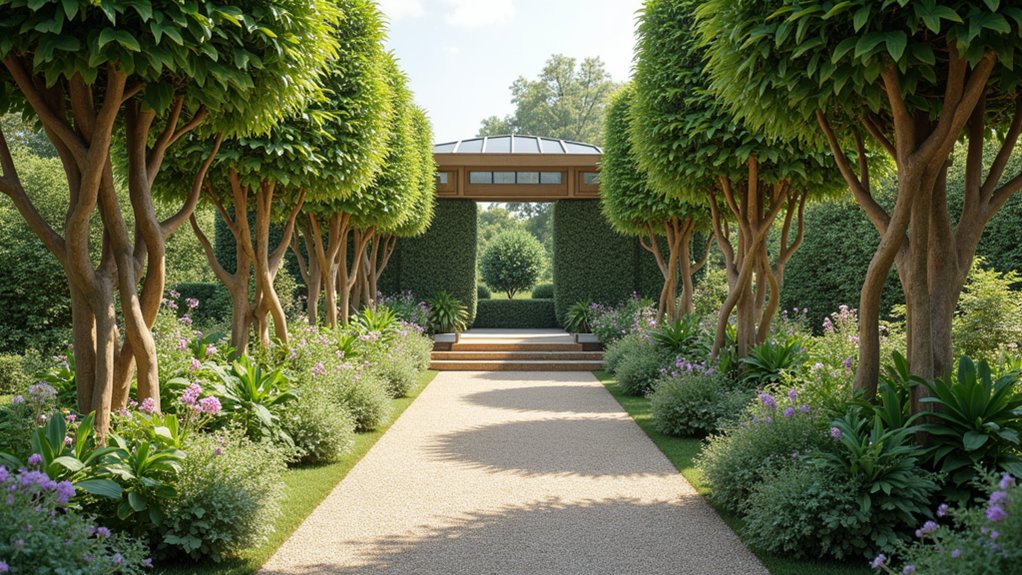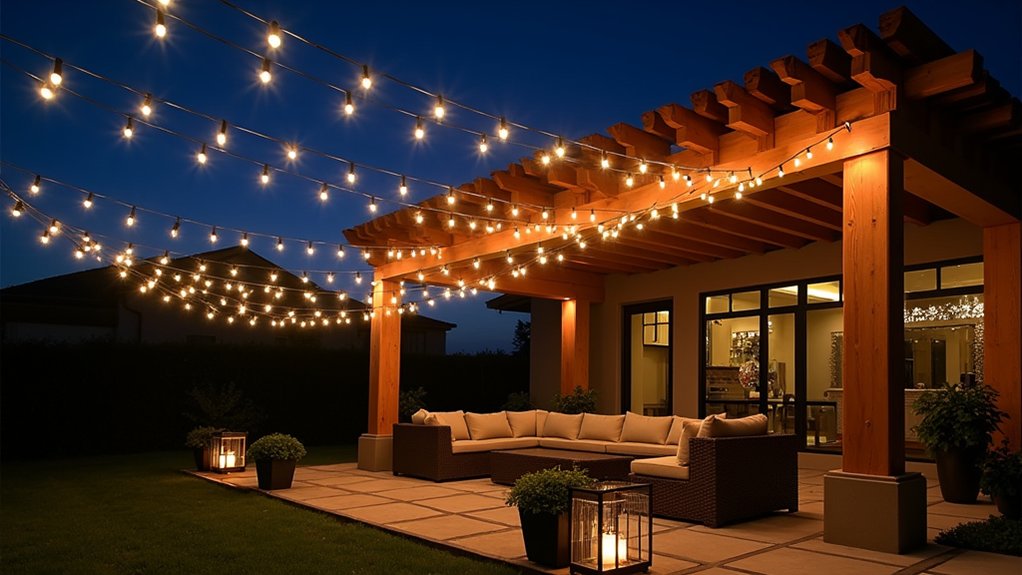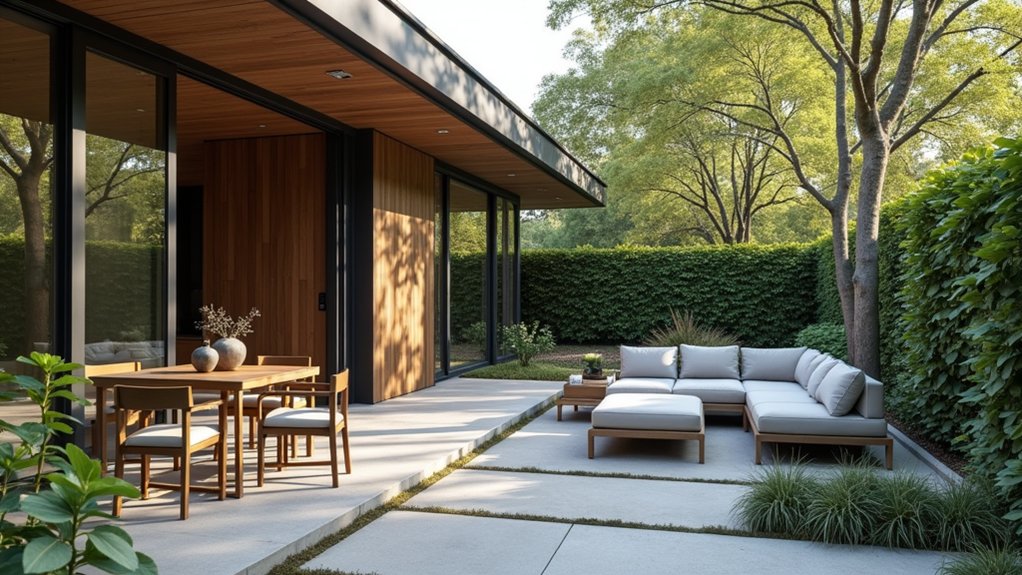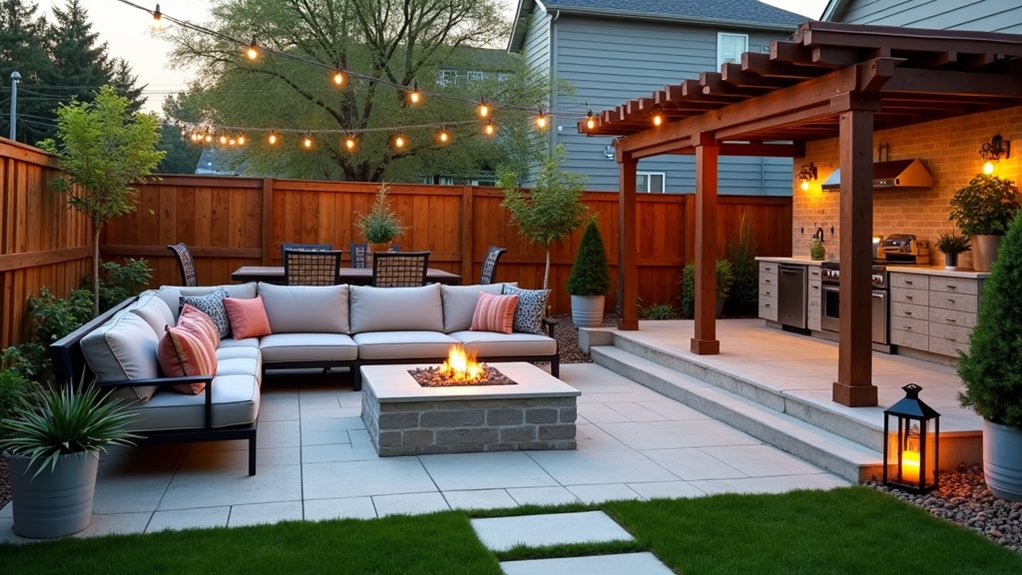While garden design trends come and go, the 2025 RHS Chelsea Flower Show emerges as a pivotal moment in horticultural history, showcasing groundbreaking approaches that combine climate resilience with technological innovation. The show’s gardens demonstrate an unprecedented focus on environmental adaptability, with features like the Save for a Rainy Day Garden’s innovative cantilevered troughs and the British Red Cross garden’s drought-resistant alpine species thriving in sand and grit compositions. The garden’s thoughtful incorporation of native resilient ferns demonstrates how shade-tolerant species can create robust, low-maintenance landscapes.
The 2025 Chelsea Flower Show redefines garden design through groundbreaking climate-resilient solutions and smart technology integration.
Technology takes center stage through sophisticated integrations like the Avanade Intelligent Garden’s AI monitoring systems for tree health and web-based applications enabling visitor interaction with trees. The introduction of the GreenSTEM zone showcases cutting-edge innovations from RHS Hilltop, serving as a living laboratory for both domestic and commercial growers. These advancements represent a significant shift toward smart garden management, particularly in water conservation and climate adaptation strategies.
Trees emerge as the cornerstone of contemporary garden design, with pine species receiving particular attention. The show’s emphasis on woodland elements extends beyond traditional approaches, incorporating vertical “urban forests” and promoting moss as a textural addition that supports wildlife while flourishing in challenging conditions.
The show’s designers have reimagined shade gardening, transforming it from a perceived limitation into a celebrated feature. Sienna Hostas’ displays, complete with organic pest management solutions, exemplify the sophisticated approach to shade-tolerant planting schemes, while ferns take their rightful place as crucial components of woodland-inspired designs.
Sustainability infiltrates every aspect of the show, from raised decking paths to the strategic replacement of annual bedding plants with self-seeding varieties. Gardens of transition demonstrate sustainable building practices, while wildlife-friendly designs incorporate managed rewilding approaches and pioneer species. The integration of native plants and water-loving bog species creates vital habitats for local fauna.
Small space solutions receive particular attention, with Chelsea designers offering innovative approaches for urban gardens. Vertical space utilization and strategic pattern implementation create visual interest in confined areas, while “balls and blobs” provide critical contrast in compact gardens.
These solutions demonstrate that regardless of size, every outdoor space can adopt the show’s forward-thinking principles of resilience, technology, and sustainability.









